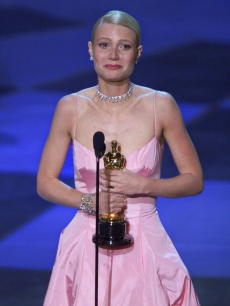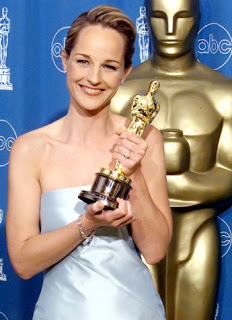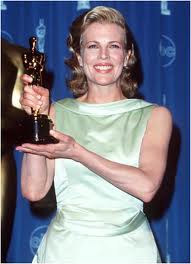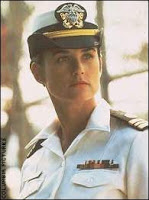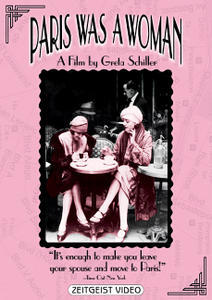In honor of Veteran’s Day, I thought I’d highlight female veterans and some movies featuring female soldiers.
The news about female vets has been plentiful as of late, and none of it particularly good or encouraging. More female veterans than ever are homeless, and government-sponsored housing is in short supply, according to the Air Force Times.
The homeless female veteran is a relatively new phenomenon because only recently have so many women — more than 190,000 in Iraq and Afghanistan alone — been serving in the military, said Todd DePastino, a historian at Waynesburg University who wrote a book on the history of homelessness.
The number of homeless female veterans have gone up — from 3 percent of all homeless veterans a decade ago to 5 percent, the VA says.
“It’s a national embarrassment,” said Paul Rieckhoff, executive director of Iraq and Afghanistan Veterans of America.
Last March, Salon.com published an article titled “The Private War of Women Soldiers” about widespread sexual assault in the military, which has currently serving women refusing to leave their cots at night for fear of being raped on their way to the latrines. Columbia professor Helen Benedict also writes of the intensity of dealing with Post-Traumatic Stress Syndrome (PTSD) from combat and sexual assault.
Not everyone realizes how different the Iraq war is for women than any other American war in history. More than 160,500 American female soldiers have served in Iraq, Afghanistan and the Middle East since the war began in 2003, which means one in seven soldiers is a woman. Women now make up 15 percent of active duty forces, four times more than in the 1991 Gulf War. At least 450 women have been wounded in Iraq, and 71 have died — more female casualties and deaths than in the Korean, Vietnam and first Gulf Wars combined. And women are fighting in combat.
Officially, the Pentagon prohibits women from serving in ground combat units such as the infantry, citing their lack of upper-body strength and a reluctance to put girls and mothers in harm’s way. But mention this ban to any female soldier in Iraq and she will scoff.
“Of course we were in combat!” said Laura Naylor, 25, who served with the Army Combat Military Police in Baghdad from 2003-04. “We were interchangeable with the infantry. They came to our police stations and helped pull security, and we helped them search houses and search people. That’s how it is in Iraq.”
Women are fighting in ground combat because there is no choice. This is a war with no front lines or safe zones, no hiding from in-flying mortars, car and roadside bombs, and not enough soldiers. As a result, women are coming home with missing limbs, mutilating wounds and severe trauma, just like the men.
With the surge of women serving in the military, there doesn’t seem to be a correlative rise in female soldiers depicted in film. Here are a few movies featuring female soldiers. All plot summaries are from IMDb.
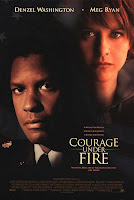
Courage Under Fire (1996)
The pilot of a rescue copter, Captain Karen Walden, died shortly before her helicopter crew was rescued after it crashed in Desert Storm. It first appears that she made a spectacular rescue of a downed helicopter crew, then held her own crew together to fight off the Iraqis after her copter crashed. LT Colonel Serling, who is struggling with his own demons from Desert Storm is assigned to investigate and award her the Medal of Honor. But some conflicting accounts from her crew and soldiers in the area, cause him to be question whether she deserves it. Written by Brian W Martz {B.Martz@Genie.com}
Rent Courage Under Fire from Netflix
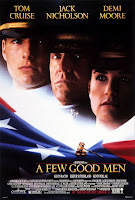 A Few Good Men (1992)
A Few Good Men (1992)
In this dramatic courtroom thriller, Lt. Daniel Kaffee, a Navy lawyer who has never seen the inside of the courtroom, defends two stubborn Marines who have been accused of murdering a colleague. Kaffee is known as being lazy and had arranged for a plea bargain. Downey’s Aunt Ginny appoints Cmdr. Galloway to represent him. Also on the legal staff is Lt. Sam Weinberg. The team rounds up many facts and Kaffee is discovering that he is really cut out for trial work. The defense is originally based upon the fact that PFC Santiago, the victim, was given a “CODE RED”. Santiago was basically a screw-up. At Gitmo, screw-ups aren’t tolerated. Especially by Col. Nathan Jessup. In Cuba, Jessup and two senior officers try to give all the help they can, but Kaffee knows something’s fishy. In the conclusion of the film, the fireworks are set off by a confrontation between Jessup and Kaffee. Written by Matt Curtolo {curt@epix.net}
Rent A Few Good Men from Netflix
 G.I. Jane (1997)
G.I. Jane (1997)
When a crusading chairperson of the military budget committee pressures the would be Navy secretary to begin full gender integration of the service, he offers the chance for a test case for a female trainee in the elite Navy SEALS commando force. Lt. Jordan O’Niel is given the assignment, but no one expects her to succeed in an inhumanly punishing regime that has a standard 60% dropout rate for men. However, O’Niel is determined to prove everyone wrong. Written by Kenneth Chisholm {kchishol@execulink.com}
Rent G.I. Jane from Netflix
 Home of the Brave (2006)
Home of the Brave (2006)
The day after they get the word they’ll go home in two weeks, a group of soldiers from Spokane are ambushed in an Iraqi city. Back stateside we follow four of them – a surgeon who saw too much, a teacher who’s a single mom and who lost a hand in the ambush, an infantry man whose best friend died that day, and a soldier who keeps reliving the moment he killed a civilian woman. Each of the four has come home changed, each feels dislocation. Group therapy, V.A. services, halting gestures from family and colleagues, and regular flashbacks keep the war front and center in their minds. They’re angry, touchy, and explosive: can a warrior find peace back home? Written by {jhailey@hotmail.com}
Rent Home of the Brave from Netflix
 Lioness (2008)
Lioness (2008)
Lioness presents the untold story of the first group of women soldiers in US history to be sent into direct ground combat, in violation of official policy. Told through intimate accounts, journal excerpts, archive footage, as well as interviews with military commanders, the film follows five women who served together for a year in Iraq. With captivating detail, this probing documentary reveals the unexpected course of events that began with using US women soldiers to defuse tensions with local civilians, but resulted in the women’s fighting in some of the bloodiest counter-insurgency battles of the war. Together the women’s candid narratives and scenes from their lives back home form a portrait of the emotional and psychological effects of war from a female point of view. Lioness is the first film to bridge the gap between perception and reality of the role women in the military are playing in Iraq, capturing an historical turning point for American society.
Read an interview with filmmakers Meg McLagan and Daria Sommers.
_____________
Have we missed some good ones? Compared with the problems female vets face, most of these movies feel like token representations. Demi Moore actually won a Razzie for Worst Actress in G.I. Jane. I’ve left out the many depictions of female soldiers in science fiction films and TV shows (Starbuck from Battlestar Gallactica immediately comes to mind), perhaps unfairly. Tell us movies we’ve left out in the comments section.
